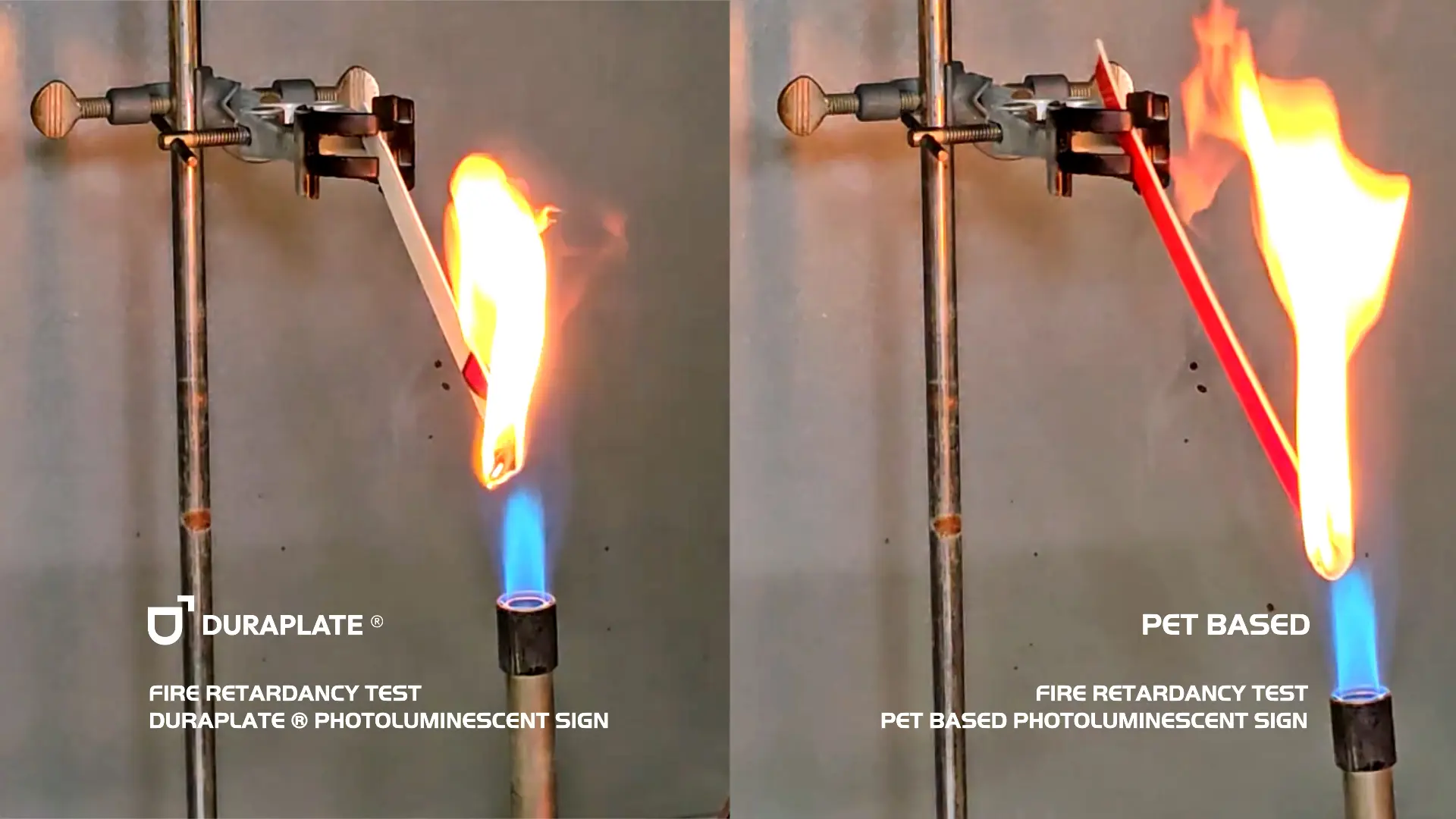
Choosing Safety at Sea: The PVC Advantage Over PET in IMO Signage and LLL Systems
Abstract:
This article examines the flammability characteristics of raw materials commonly used in the production of IMO signs and Low Location Lighting (LLL) systems. It highlights the differences between these materials, focusing on their implications for safety in the maritime industry.
Introduction:
The flammability of plastics is a significant concern, especially in sensitive industries like the maritime sector. Polyethylene Terephthalate (PET) and Polyvinyl Chloride (PVC) are two common types of plastics with varying degrees of flammability.
PET flammability:
PET is known for its diverse applications including in textiles, packaging, and beverage bottles. However, its flammability can pose a restriction, particularly in the maritime sector. When subjected to flames, PET can melt and drip, potentially igniting other materials in the vicinity.
PVC flammability:
On the other hand, PVC is regarded as a self-extinguishing material due to its inherent flame-retardant properties attributed. The official flammability rating of PVC is UL 94 V-0, demonstrating its excellent fire resistance as it won’t easily burn unless kept under intense heat and flame.The heat release rate of rigid PVC is among the lower values found for combustible materials, making it a safer choice when fire safety is a factor. Unlike PET, PVC’s resistance to ignition and self-extinguishing nature make it a preferred choice in environments where fire safety is a critical concern.
Comparing PET and PVC:
The contrasting flammability profiles of PET and PVC as per UL ratings clearly highlight the superior fire safety characteristics of PVC. While PET easily catches fire, making it a risky choice for certain applications, PVC’s non-flammable nature makes it a reliable material in safety-critical environments. This distinction is vital for industries and applications where adherence to fire safety standards is obligatory, thus significantly favoring the use of PVC over PET in such scenarios.
There may be many ways of evaluating the fire retarding properties, but the oxygen index can be used for the evaluation with a comparatively high precision and reproducibility of the results. It represents the minimum oxygen concentration required for the test piece to continue burning in mixed gas of oxygen and nitrogen. When the value is higher, the fire retarding property is higher. Since the oxygen concentration in the air is 21%, a plastic with an oxygen index greater than 22 has self-extinguishing property, while a plastic with oxygen index smaller than 21 is flammable.

Plastics in maritime industry:
In the maritime industry, adherence to fire safety standards is paramount. The International Maritime Organization’s (IMO) 2010 FTP Code Part 5 sets the framework for evaluating the fire performance of materials. IMO 2010 FTP Code Part 5 emphasizes the importance of utilizing fire-resistant materials like PVC to mitigate fire risks, ensuring the safety and integrity of marine vessels and offshore structures. The lower flammability of PVC as compared to PET makes it a more suitable material in contexts where fire safety is crucial, aligning with the stringent fire protection requirements of the maritime industry.
Conclusion:
Both safety signs and LLL systems produced by our company are MED-certified products, thus meeting the requirements of the IMO 2010 FTP Code Part 5 standard.
Putting safety first, we decided to design these products based on the self-extinguishing PVC material which ensures their safe use for many years.
